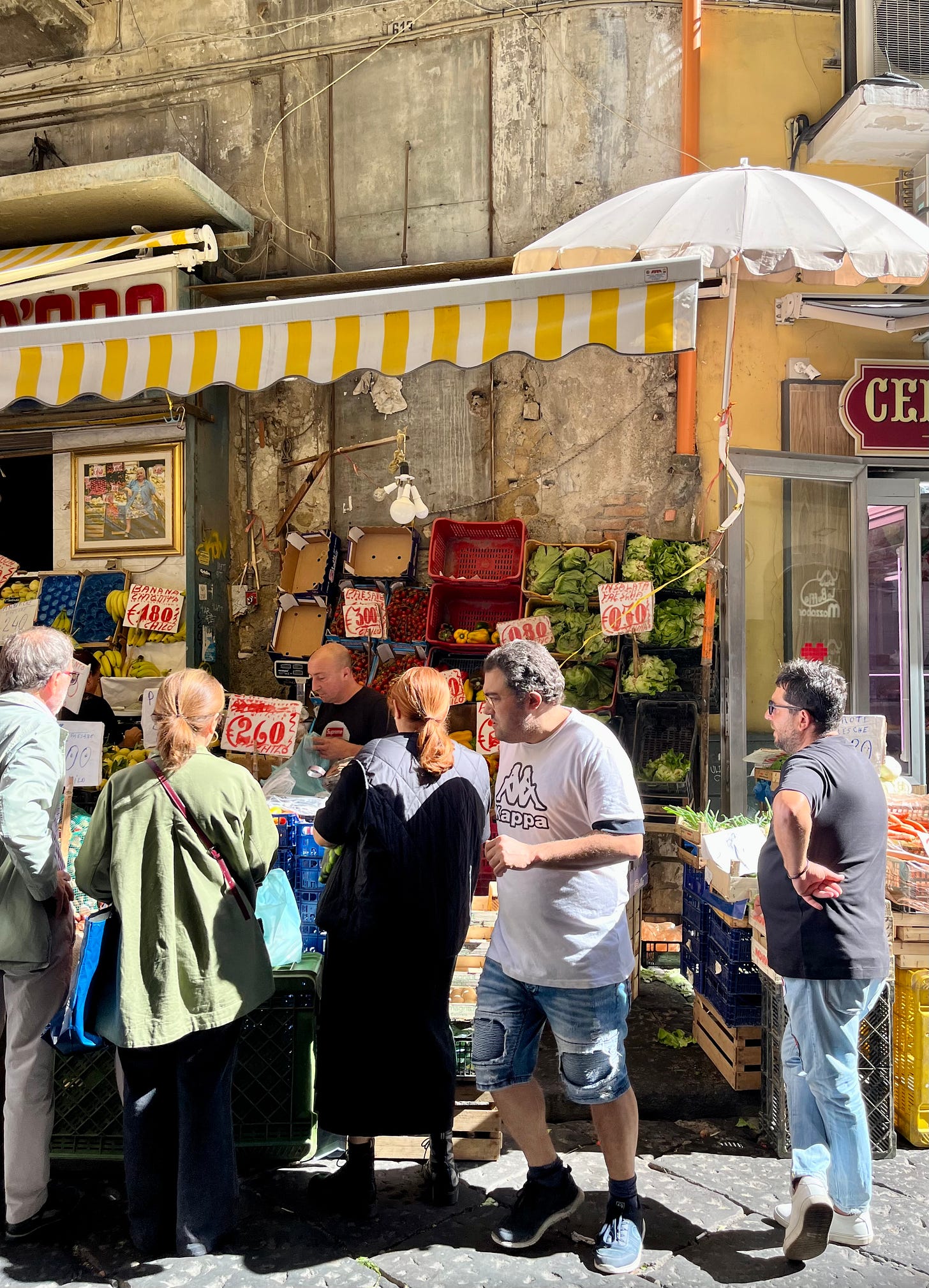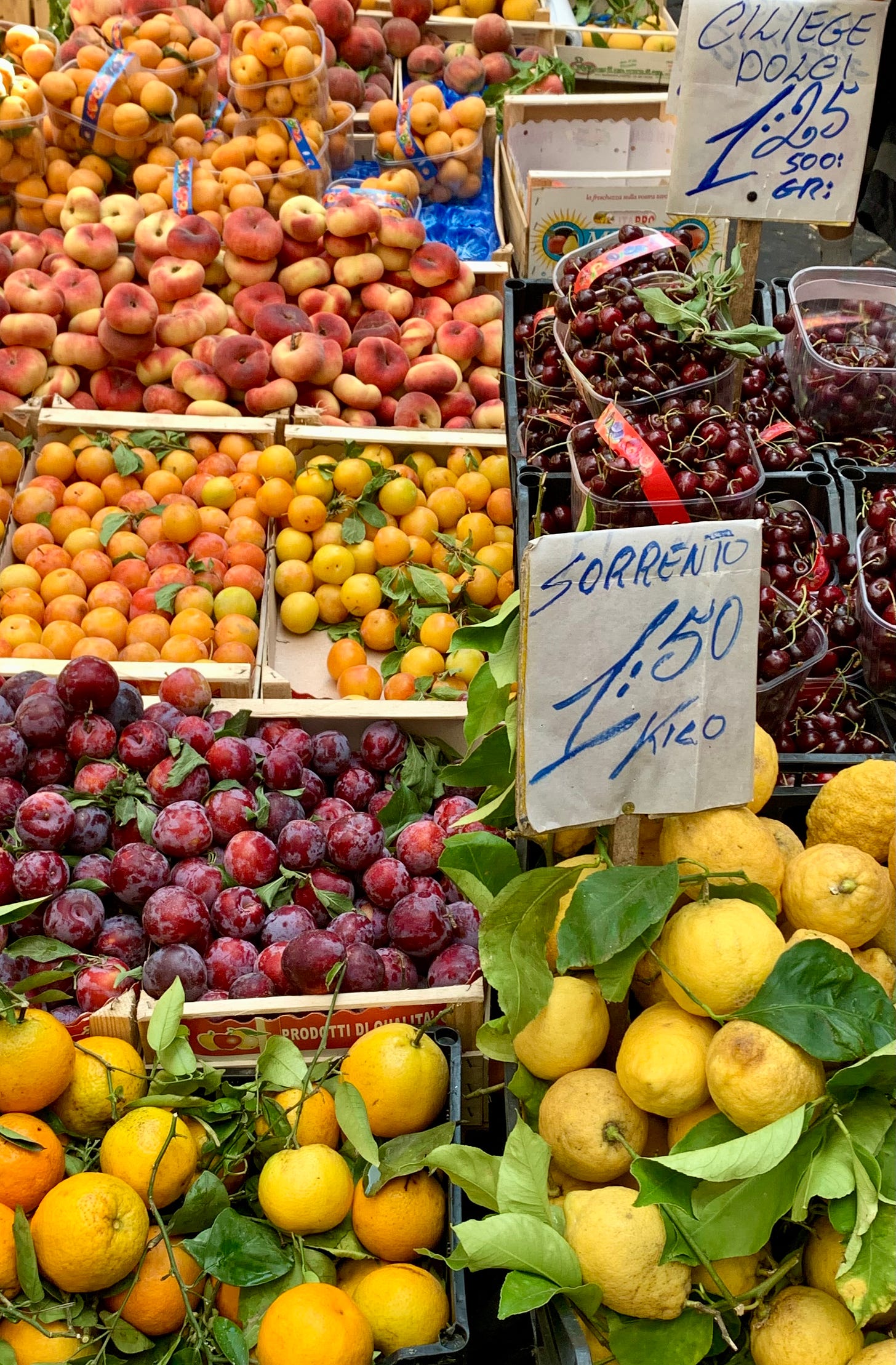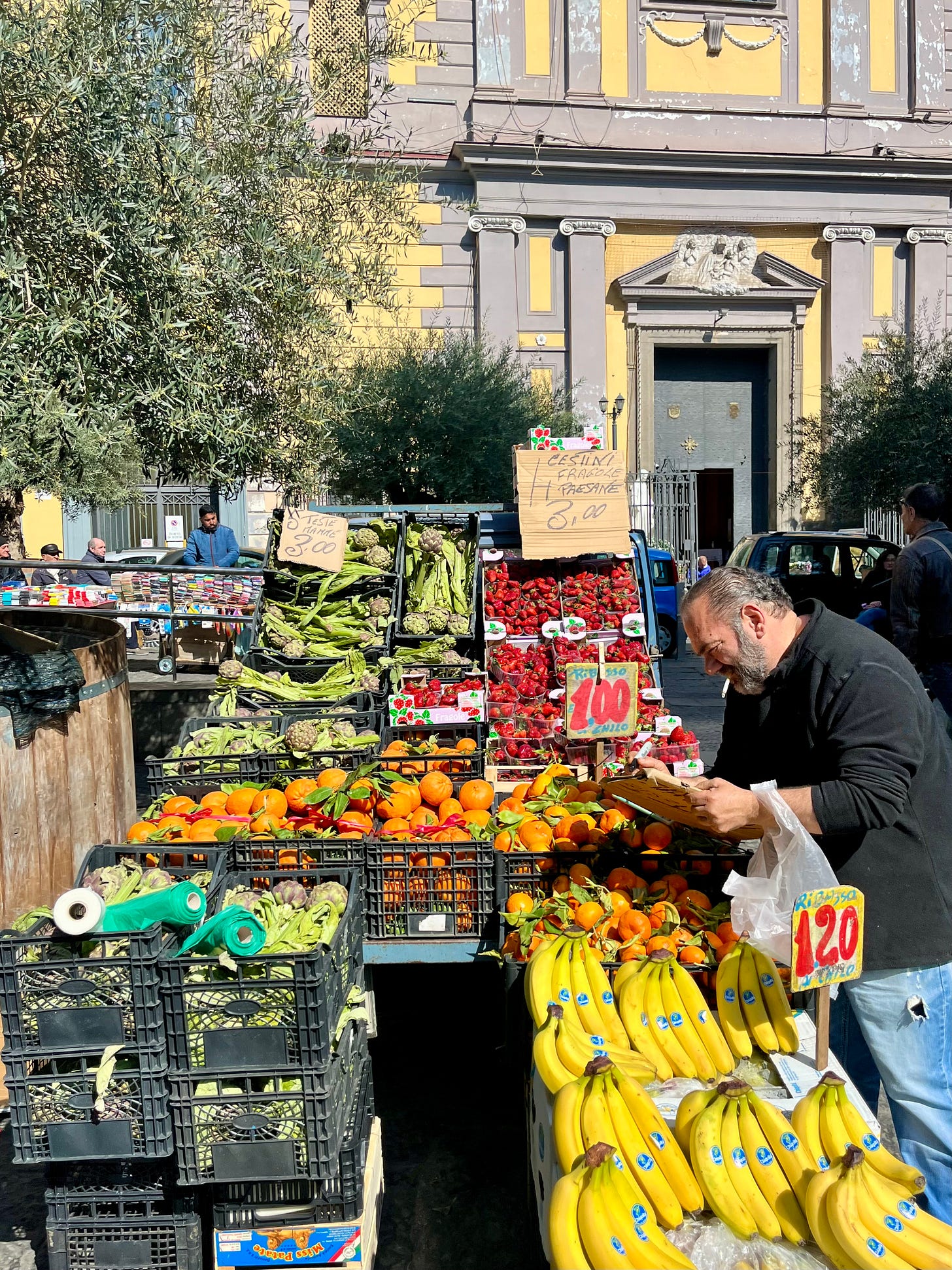If I had to travel down one Neapolitan street for the rest of my life, it would be Via Pignasecca. Arguably one of the most historic streets in the city itself, aside from Spaccanapoli and Via Roma, Via Pignasecca is a cultural hub where one can smell, ingest, and observe daily Neapolitan life.
Daily Neapolitan life, for one, has an art to it. There is no rhyme or reason. It is noisy, cinematic, and sometimes problematic if you are a foreigner like me (i.e., constant littering and multiple young children on one motorcycle without helmets). It can make your head spin if you’re not accustomed to car fumes and the raspy yet somehow intoxicating sound of the Neapolitan language. This statement may seem extremely ignorant and stereotypical, but it is incredibly true after more than four years of exploring this city.
Yet, Neapolitan life can make you feel alive and whole and, dare I say, a chance to break the rules and live on the edge. Naples is neither urban, clean, or reformed like Milan nor picturesque and well-mannered like Florence. Naples is, well, Naples. There’s no other way to put it. Or, as Anthony Bourdain said, the city itself is controsenso (against sense). Which I guess is the only other way to describe this breathing, historic, beautiful, mighty beast.
If you come to Naples, you will either love or hate it. There is no in-between. But either way, there is a lot to see. After all, the city is old and was one of Europe's most important port cities. Wherever you choose to start, take a walk down Via Pignasecca, one of the best places to get to know the city.
Background
The open-air Pignasecca market that lines the narrow street has been the epicenter of food, bargaining, and produce that dates back to ancient Greek and Roman times. Into the Middle Ages, it became a bustling marketplace. During the Spanish rule, the area became even more commercialized, serving both the local population and Spanish soldiers stationed nearby, thanks to the market’s proximity to the historic Quartieri Spagnoli (Spanish Quarters), where Spanish soldiers were housed. Safe to say, this market is one of, if not the oldest, in the city. Still, to this day, it is where many locals go to do their daily food shopping, chat with a friend, eat a pizza at one of the two notable pizzerias, or grab fried fish and drink a beer.
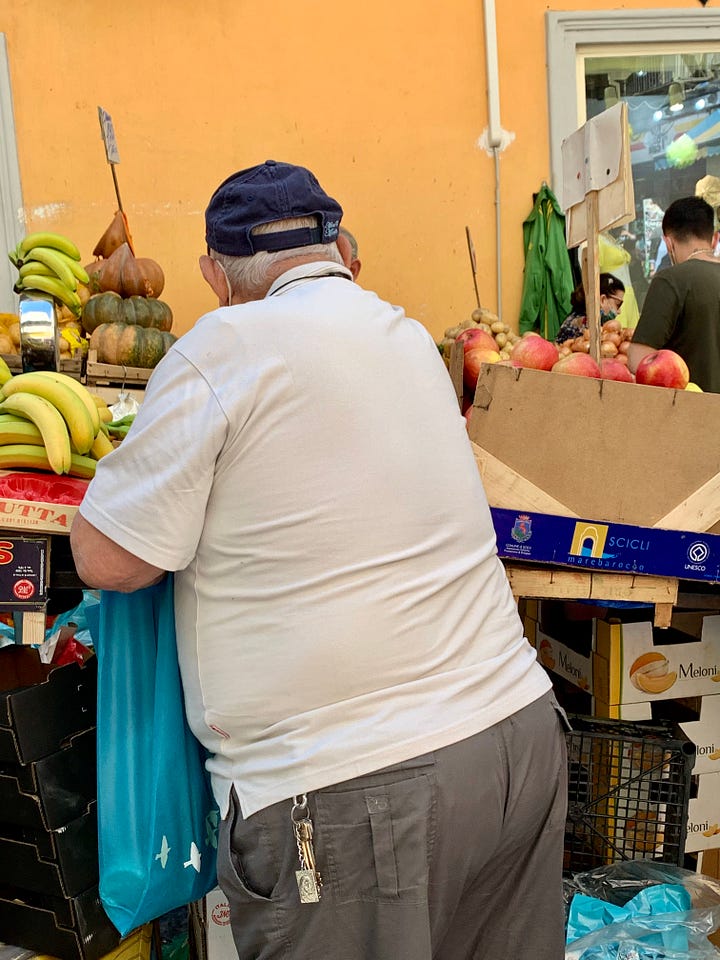

Market Art
The vegetable and fruit stands are fresh, seasonal, economical, and in my eyes, a work of art. Colorful produce fill the edges of the sidewalks from morning dusk to evening dawn, and buying from the vendors is an acquired skill and not just something you learn over night. Don’t bother taking a number or thinking for a second there is an honor system of who arrived first to make an order. Italians as a whole, especially Neapolitans, aren’t the best at standing in a line. Which I guess there is an art to organized chaos?
Along the via, there are some poor quality clothing shops that take away from the beauty. I don’t support these stores.
What to Do
Although much of the city has changed, thanks to the city’s soccer team winning their third Scudetto and the death of Naples’s second saint, Diego Maradona, much of the market has remained the same. And isn’t that what we long for in a world of over-tourism, tourist-traps, and astronomical rent prices? After all, five years ago, many foreigners and Italians alike wouldn’t dare to go past the train station’s platform and explore the city.
Aside from munching on the ripest from the vine, there are a handful of Neapolitan institutions along Via Pignasecca worth checking out.

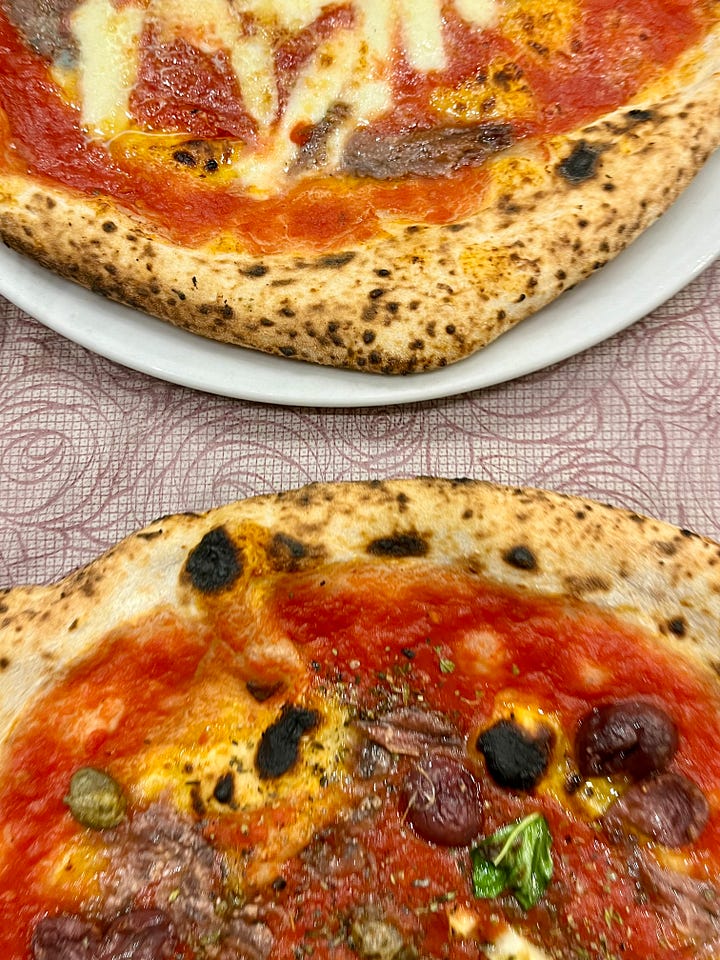
Pizzeria Da Attilio or Pizzeria & Trattoria al 22: These are two institutional pizzerias right next to one another. You can’t go wrong with either. Although Attilio has much more internet publicity, I think 22 is right up there with them when it comes to taste and quality.
Pescheria Azzurra: a fish market during the day turned open-air, with top tables and chairs to eat fried seafood, fresh pasta, and cold beer.
Spina is an old-school kitchen and home supply store where you can get a quality moka pot or a cuccumela (the Neapolitan version of the moka pot) for a keepsake to take home.
Ai Monti Lattari: This meat and cheese shop is over 50 years old, and caciocavallo hangs from the ceiling. Behind the counter, they prepare sandwiches with your choice of fillings.




